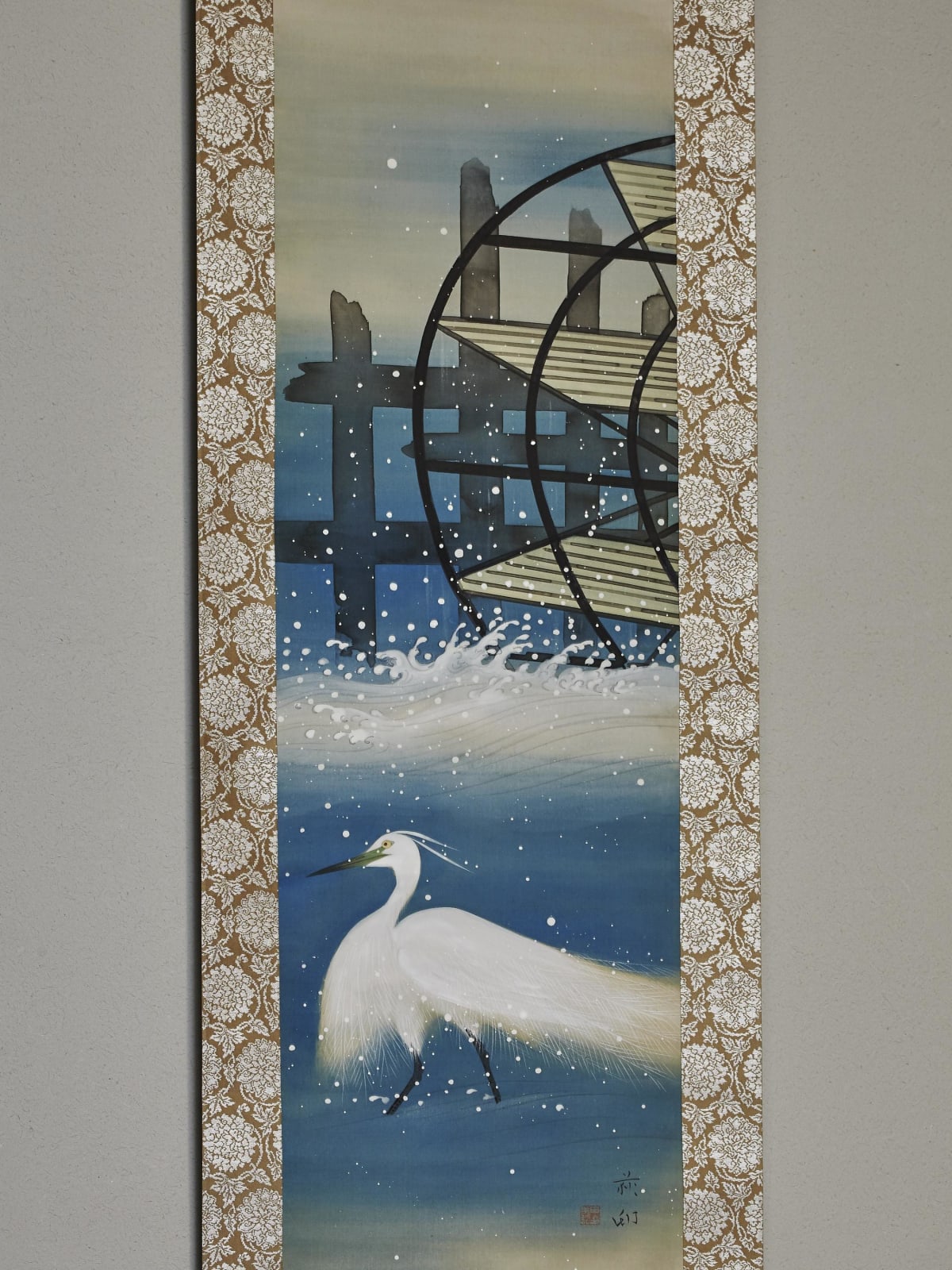Uda Tekison (1896−1980)
Waterwheel
Color and gold on silk, hanging scroll
With a box signed by the artist, double boxed
Seal: Denzen in
121 x 32.8 cm
204 x 46 cm (overall)
Further images
Uda Tekison’s early works, such as Ichiriki at Night (1919), Tayu (1920), and Minamiza (1922), deeply reflect the Taisho Period atmosphere. The gloomy air was suddenly transformed to a lavish palette that is reminiscent of the art style of the Momoyama Period from his celebrated seventh Teiten awarded Waterwheel in Yodo (1926). Since then, Tekison often paints water sceneries that include elements such as water wheel, egret, and various fisheries. In the present work, he concentrated on the various expressions of the flowing, dropping, and outbursting of water. In particular, the splashing brings a sense of pureness as if these were snowflakes. The flat representation of the cylinder piles and the strangely distorted shape of the waterwheel somehow create a sense of balance that adds to the charm of the present work.
Uda Tekison (nihonga painter; 1896–1980)
Mie-born nihonga painter. His real name is Zenjiro. Studied under Kikuchi Hobun and Kikuchi Keigetsu. Established a style of lucidity and classical characteristics based on the Shijo school style with an influence from Yamato-e classical Japanese style. Established Hakushin-sha, a private school devoting to the cultivation of young painters. Member of the Japan Art Academy. Received the Third Order of the Sacred Tresure.
Uda Tekison (nihonga painter; 1896–1980)
Mie-born nihonga painter. His real name is Zenjiro. Studied under Kikuchi Hobun and Kikuchi Keigetsu. Established a style of lucidity and classical characteristics based on the Shijo school style with an influence from Yamato-e classical Japanese style. Established Hakushin-sha, a private school devoting to the cultivation of young painters. Member of the Japan Art Academy. Received the Third Order of the Sacred Tresure.









